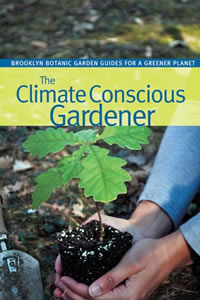 “The Climate Conscious Gardener” is the latest in the Brooklyn Botanic Garden Guides for a Greener Planet. While most of the contributing authors live in the Northeast, one of the five chapters, “Turning Your Landscape into a Carbon Sink,” was written by Arboretum Foundation staff member Niall Dunne. To give an objective perspective, I’ll quote from a review in HortIdeas (published by Greg and Pat Williams in Gravel Switch, Kentucky — so no regional bias here): “Dunne’s chapter alone is worth getting the book…with valuable information on numerous techniques for sequestering carbon in backyard gardens. Wouldn’t it be great if amateurs throughout the U.S. could keep a really huge amount of carbon out of the atmosphere?”
“The Climate Conscious Gardener” is the latest in the Brooklyn Botanic Garden Guides for a Greener Planet. While most of the contributing authors live in the Northeast, one of the five chapters, “Turning Your Landscape into a Carbon Sink,” was written by Arboretum Foundation staff member Niall Dunne. To give an objective perspective, I’ll quote from a review in HortIdeas (published by Greg and Pat Williams in Gravel Switch, Kentucky — so no regional bias here): “Dunne’s chapter alone is worth getting the book…with valuable information on numerous techniques for sequestering carbon in backyard gardens. Wouldn’t it be great if amateurs throughout the U.S. could keep a really huge amount of carbon out of the atmosphere?”
Excerpted from the Fall 2010 Arboretum Bulletin.
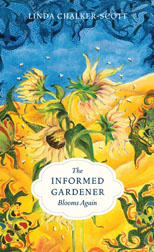 Linda Chalker-Scott debunks many gardening practices that don’t work in “The Informed Gardener Blooms Again,” a sequel to her excellent “The Informed Gardener” from 2008. The format is very similar to the first book, built around a series of short chapters with Sherlock Holmesian titles (“The Myth of the Magic Bullet”, “The Myth of Nitrogen-nabbing Wood Chips”) that analyze horticultural fads and home remedies from an applied, scientific perspective. After a thorough discussion of the research, a helpful summary (“The Bottom Line”) follows, along with references to support her conclusions.
Linda Chalker-Scott debunks many gardening practices that don’t work in “The Informed Gardener Blooms Again,” a sequel to her excellent “The Informed Gardener” from 2008. The format is very similar to the first book, built around a series of short chapters with Sherlock Holmesian titles (“The Myth of the Magic Bullet”, “The Myth of Nitrogen-nabbing Wood Chips”) that analyze horticultural fads and home remedies from an applied, scientific perspective. After a thorough discussion of the research, a helpful summary (“The Bottom Line”) follows, along with references to support her conclusions.
Chalker-Scott clearly has a passion for bringing science based, best practices to both home gardens and professional landscapes, as she has also edited and published “Sustainable Landscapes & Gardens: Good Science-Practical Application.” Divided into five, separately bound units–all housed in a three-ring binder–this work has contributors from major universities throughout the Pacific Northwest.
The audience here could be either the home gardener or the professional who designs, installs, or maintains landscape plantings. The writing, while technical, is well-edited for readability for the non-academic reader and teaches not only better horticulture, but also about the research process that generates this advice. The format is designed for easily added updates and additions, so this is likely to be an important reference for our region for a long time.
Excerpted from the Fall 2010 Arboretum Bulletin.
 Enjoy it. These final two words of the sub-title to Valerie Easton’s new book, “The NEW Low-Maintenance Garden” are the key to her message. Other low maintenance manuals treat the garden as a bothersome necessity to having a house; here the emphasis in on the joy of the garden, without it taking over your life.
Enjoy it. These final two words of the sub-title to Valerie Easton’s new book, “The NEW Low-Maintenance Garden” are the key to her message. Other low maintenance manuals treat the garden as a bothersome necessity to having a house; here the emphasis in on the joy of the garden, without it taking over your life.
Organized by broad themes, including “Design with Maintenance in Mind” and “Nature’s Rhythms”, Easton augments her points with interviews of an impressive list of designers, gardeners, and home owners who have created a successful outdoor space. She completes each chapter with a list of books and other resources (once a librarian…) and throughout there are oodles of tips for simplification. Best of all, she gives the type A gardener permission to relax, and to find the pleasure of it all again.
Excerpted from the Fall 2010 Arboretum Bulletin.
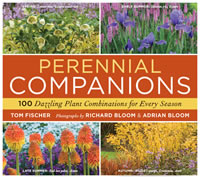 From Oregon, Timber Press editor-in-chief Tom Fischer has created his own book, “Perennial Companions,” that demonstrates 100 design combinations using herbaceous perennials and ornamental grasses. I found it best to look at the right hand, full page photographs first (almost like a flip book), then stopping at my favorites to read the interpretive material on the matching left hand page.
From Oregon, Timber Press editor-in-chief Tom Fischer has created his own book, “Perennial Companions,” that demonstrates 100 design combinations using herbaceous perennials and ornamental grasses. I found it best to look at the right hand, full page photographs first (almost like a flip book), then stopping at my favorites to read the interpretive material on the matching left hand page.
Excerpted from the Fall 2010 Arboretum Bulletin.
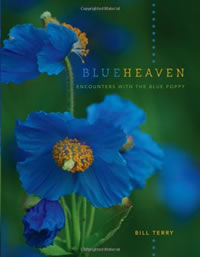 Bill Terry, from the Sunshine coast of British Columbia, has filled a small book (“Blue Heaven”) with an ode of praise to Meconopsis grandis, the Himalayan Blue Poppy. His cultural advice will encourage the favored few living in a climate that will nurture this hard-to-please jewel (along with some more easily managed companions like candelabra primulas and other poppies), but anyone can enjoy this display of plant passion at its highest level.
Bill Terry, from the Sunshine coast of British Columbia, has filled a small book (“Blue Heaven”) with an ode of praise to Meconopsis grandis, the Himalayan Blue Poppy. His cultural advice will encourage the favored few living in a climate that will nurture this hard-to-please jewel (along with some more easily managed companions like candelabra primulas and other poppies), but anyone can enjoy this display of plant passion at its highest level.
Excerpted from the Fall 2010 Arboretum Bulletin.
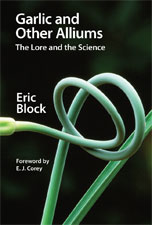 The genus Allium covers onions, garlic, leeks, chives and others. Their pungent odor comes from sulfur compounds they contain. Dr. Eric Block is a professor at New York State University at Albany, and has spent over 35 years studying the chemistry of alliums. His book covers an enormous range of information on the genus Allium. The “Lore” portions are fascinating, with references to archaeology, literature, painting, folk medicine, cultivation, and more. The “Science: parts are – well – scientific. For those who would like to explore the phytochemistry of alliums and its sulfur components, the long chapter on these topics is comprehensive.
The genus Allium covers onions, garlic, leeks, chives and others. Their pungent odor comes from sulfur compounds they contain. Dr. Eric Block is a professor at New York State University at Albany, and has spent over 35 years studying the chemistry of alliums. His book covers an enormous range of information on the genus Allium. The “Lore” portions are fascinating, with references to archaeology, literature, painting, folk medicine, cultivation, and more. The “Science: parts are – well – scientific. For those who would like to explore the phytochemistry of alliums and its sulfur components, the long chapter on these topics is comprehensive.
For the rest of us, browsing the other chapters one can discover a 1600-1700 BCE recipe for braised turnips containing onions, turnips, and garlic and leek juice. Allium references in literature range from the Bible to Shakespeare to Rudyard Kipling. There is a whole chapter on folk medicine, both its uses and some cautions, such as this one: alliums including onion, garlic, leeks and chives are toxic to cats, dogs and monkeys.
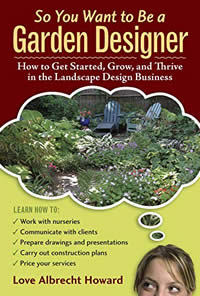 Love Albrecht Howard’s first book fills a gap in our collection. To my knowledge, it is the only recent book on running a garden design business that is written for plant lovers who may not have formal horticultural or business training, but who do have a fair amount of common sense and are willing to get their hands (and feet!) dirty learning. The author certainly approves of formal education, recommending that prospective designers take courses, but she knows firsthand that hands-on experience gained through internships, volunteer work, and garden shows, as well as time spent with gardening books and magazines can be even more valuable than coursework. Indeed, fifteen out of twenty chapters focus on day-to-day operations, including best gardening practices, rather than on estimating costs, hiring staff, and other money-related aspects of the business.
Love Albrecht Howard’s first book fills a gap in our collection. To my knowledge, it is the only recent book on running a garden design business that is written for plant lovers who may not have formal horticultural or business training, but who do have a fair amount of common sense and are willing to get their hands (and feet!) dirty learning. The author certainly approves of formal education, recommending that prospective designers take courses, but she knows firsthand that hands-on experience gained through internships, volunteer work, and garden shows, as well as time spent with gardening books and magazines can be even more valuable than coursework. Indeed, fifteen out of twenty chapters focus on day-to-day operations, including best gardening practices, rather than on estimating costs, hiring staff, and other money-related aspects of the business.
To its credit, this book has a comprehensive index, with topics ranging from accent plants to Rocky Mountain spotted fever to zone creep. Albrecht Howard offers a wealth of knowledge gained from real-world experience, along with basic guidelines to help ensure the fledgling business does well financially. The underlying message is one most readers will want to hear: if a new designer can perfect skills in garden design, plant care, and customer relations, the money is secondary, and it will come.
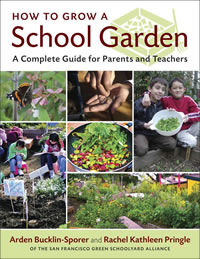 The authors, who are members of the San Francisco Green Schoolyard Alliance, recognize a fact that is becoming clear in schools across the country: if we are to have school gardens in this era of tightening budgets, increased academic testing and expanding class sizes, parents must step up and offer their time and energy to establish and maintain them. My own personal experience with this process as a volunteer in the garden at my neighborhood elementary school indicates that while a few parents at each school might have the necessary time and energy to devote to this, it is rare to find anyone at all with the practical knowledge, patience and understanding that are necessary to make such a garden flourish. That’s why this book is so important and useful. Not only does it empower parents and teachers to get something growing, it educates them about the planning, funding, building, maintenance, use, and enjoyment of such a garden. Valuable topics include dealing with vandalism, training students in basic garden tasks, preparing for garden lessons, scheduling class activities in the garden, and planning for summer watering. This book is a must-have for any gardening library.
The authors, who are members of the San Francisco Green Schoolyard Alliance, recognize a fact that is becoming clear in schools across the country: if we are to have school gardens in this era of tightening budgets, increased academic testing and expanding class sizes, parents must step up and offer their time and energy to establish and maintain them. My own personal experience with this process as a volunteer in the garden at my neighborhood elementary school indicates that while a few parents at each school might have the necessary time and energy to devote to this, it is rare to find anyone at all with the practical knowledge, patience and understanding that are necessary to make such a garden flourish. That’s why this book is so important and useful. Not only does it empower parents and teachers to get something growing, it educates them about the planning, funding, building, maintenance, use, and enjoyment of such a garden. Valuable topics include dealing with vandalism, training students in basic garden tasks, preparing for garden lessons, scheduling class activities in the garden, and planning for summer watering. This book is a must-have for any gardening library.
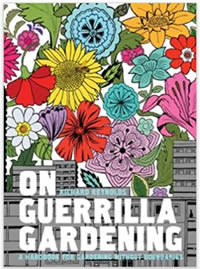
Have you ever passed by a patch of barren, overgrown or otherwise neglected ground and thought, “Someone should plant a garden there?” Richard Reynolds not only did, he established and nurtured a garden at his housing block’s previously bleak site. And then he went one better, and founded a movement that has spread worldwide. He fervently believes that gardening should not be the exclusive province of those who own property or manage to score a coveted spot at the P-patch. Instead, he advocates taking over landscape installation and maintenance anywhere it is not already being done, or done well, in public and private spaces alike.
Despite his almost comically serious reliance on the language and “lessons” of actual guerrilla warfare (the book starts out with Che and Mao, shows a photo of seed “bombs” in the shape of a 9mm pistol, and gardeners can sign up at www.guerrillagardening.com to get a “troop number”), Reynolds aims to inspire beautification, so half the book is devoted to practical advice. He addresses the myriad issues an aspiring guerrilla gardener must face, from site selection to plant choice for hardiness and maximum visual impact, the non-availability of water, how to discourage vandalism, and, eventually, perhaps legitimize the established garden.
Of course, humans have been sneaking seeds and plants into spaces that are technically not their own for millennia – Reynolds just gave their actions a name and labeled it a cause.
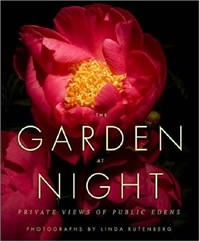 As a resident of Montreal, Linda Rutenberg does not qualify as a Pacific Northwest author, but the collection of her photographs in the 2007 publication “The Garden at Night: Private Views of Public Eden” includes PNW subjects. The Washington Park Arboretum and the Butchart Gardens are both featured, as are several other west coast gardens. The Italian Garden at Butchart is particularly enchanting at night, and one simply must experience Azalea Way — after dark!
As a resident of Montreal, Linda Rutenberg does not qualify as a Pacific Northwest author, but the collection of her photographs in the 2007 publication “The Garden at Night: Private Views of Public Eden” includes PNW subjects. The Washington Park Arboretum and the Butchart Gardens are both featured, as are several other west coast gardens. The Italian Garden at Butchart is particularly enchanting at night, and one simply must experience Azalea Way — after dark!
Excerpted from the Fall 2009 Arboretum Bulletin.
 “The Climate Conscious Gardener” is the latest in the Brooklyn Botanic Garden Guides for a Greener Planet. While most of the contributing authors live in the Northeast, one of the five chapters, “Turning Your Landscape into a Carbon Sink,” was written by Arboretum Foundation staff member Niall Dunne. To give an objective perspective, I’ll quote from a review in HortIdeas (published by Greg and Pat Williams in Gravel Switch, Kentucky — so no regional bias here): “Dunne’s chapter alone is worth getting the book…with valuable information on numerous techniques for sequestering carbon in backyard gardens. Wouldn’t it be great if amateurs throughout the U.S. could keep a really huge amount of carbon out of the atmosphere?”
“The Climate Conscious Gardener” is the latest in the Brooklyn Botanic Garden Guides for a Greener Planet. While most of the contributing authors live in the Northeast, one of the five chapters, “Turning Your Landscape into a Carbon Sink,” was written by Arboretum Foundation staff member Niall Dunne. To give an objective perspective, I’ll quote from a review in HortIdeas (published by Greg and Pat Williams in Gravel Switch, Kentucky — so no regional bias here): “Dunne’s chapter alone is worth getting the book…with valuable information on numerous techniques for sequestering carbon in backyard gardens. Wouldn’t it be great if amateurs throughout the U.S. could keep a really huge amount of carbon out of the atmosphere?” Linda Chalker-Scott debunks many gardening practices that don’t work in “The Informed Gardener Blooms Again,” a sequel to her excellent “The Informed Gardener” from 2008. The format is very similar to the first book, built around a series of short chapters with Sherlock Holmesian titles (“The Myth of the Magic Bullet”, “The Myth of Nitrogen-nabbing Wood Chips”) that analyze horticultural fads and home remedies from an applied, scientific perspective. After a thorough discussion of the research, a helpful summary (“The Bottom Line”) follows, along with references to support her conclusions.
Linda Chalker-Scott debunks many gardening practices that don’t work in “The Informed Gardener Blooms Again,” a sequel to her excellent “The Informed Gardener” from 2008. The format is very similar to the first book, built around a series of short chapters with Sherlock Holmesian titles (“The Myth of the Magic Bullet”, “The Myth of Nitrogen-nabbing Wood Chips”) that analyze horticultural fads and home remedies from an applied, scientific perspective. After a thorough discussion of the research, a helpful summary (“The Bottom Line”) follows, along with references to support her conclusions. Enjoy it. These final two words of the sub-title to Valerie Easton’s new book, “The NEW Low-Maintenance Garden” are the key to her message. Other low maintenance manuals treat the garden as a bothersome necessity to having a house; here the emphasis in on the joy of the garden, without it taking over your life.
Enjoy it. These final two words of the sub-title to Valerie Easton’s new book, “The NEW Low-Maintenance Garden” are the key to her message. Other low maintenance manuals treat the garden as a bothersome necessity to having a house; here the emphasis in on the joy of the garden, without it taking over your life. From Oregon, Timber Press editor-in-chief Tom Fischer has created his own book, “Perennial Companions,” that demonstrates 100 design combinations using herbaceous perennials and ornamental grasses. I found it best to look at the right hand, full page photographs first (almost like a flip book), then stopping at my favorites to read the interpretive material on the matching left hand page.
From Oregon, Timber Press editor-in-chief Tom Fischer has created his own book, “Perennial Companions,” that demonstrates 100 design combinations using herbaceous perennials and ornamental grasses. I found it best to look at the right hand, full page photographs first (almost like a flip book), then stopping at my favorites to read the interpretive material on the matching left hand page. Bill Terry, from the Sunshine coast of British Columbia, has filled a small book (“Blue Heaven”) with an ode of praise to Meconopsis grandis, the Himalayan Blue Poppy. His cultural advice will encourage the favored few living in a climate that will nurture this hard-to-please jewel (along with some more easily managed companions like candelabra primulas and other poppies), but anyone can enjoy this display of plant passion at its highest level.
Bill Terry, from the Sunshine coast of British Columbia, has filled a small book (“Blue Heaven”) with an ode of praise to Meconopsis grandis, the Himalayan Blue Poppy. His cultural advice will encourage the favored few living in a climate that will nurture this hard-to-please jewel (along with some more easily managed companions like candelabra primulas and other poppies), but anyone can enjoy this display of plant passion at its highest level. The genus Allium covers onions, garlic, leeks, chives and others. Their pungent odor comes from sulfur compounds they contain. Dr. Eric Block is a professor at New York State University at Albany, and has spent over 35 years studying the chemistry of alliums. His book covers an enormous range of information on the genus Allium. The “Lore” portions are fascinating, with references to archaeology, literature, painting, folk medicine, cultivation, and more. The “Science: parts are – well – scientific. For those who would like to explore the phytochemistry of alliums and its sulfur components, the long chapter on these topics is comprehensive.
The genus Allium covers onions, garlic, leeks, chives and others. Their pungent odor comes from sulfur compounds they contain. Dr. Eric Block is a professor at New York State University at Albany, and has spent over 35 years studying the chemistry of alliums. His book covers an enormous range of information on the genus Allium. The “Lore” portions are fascinating, with references to archaeology, literature, painting, folk medicine, cultivation, and more. The “Science: parts are – well – scientific. For those who would like to explore the phytochemistry of alliums and its sulfur components, the long chapter on these topics is comprehensive. Love Albrecht Howard’s first book fills a gap in our collection. To my knowledge, it is the only recent book on running a garden design business that is written for plant lovers who may not have formal horticultural or business training, but who do have a fair amount of common sense and are willing to get their hands (and feet!) dirty learning. The author certainly approves of formal education, recommending that prospective designers take courses, but she knows firsthand that hands-on experience gained through internships, volunteer work, and garden shows, as well as time spent with gardening books and magazines can be even more valuable than coursework. Indeed, fifteen out of twenty chapters focus on day-to-day operations, including best gardening practices, rather than on estimating costs, hiring staff, and other money-related aspects of the business.
Love Albrecht Howard’s first book fills a gap in our collection. To my knowledge, it is the only recent book on running a garden design business that is written for plant lovers who may not have formal horticultural or business training, but who do have a fair amount of common sense and are willing to get their hands (and feet!) dirty learning. The author certainly approves of formal education, recommending that prospective designers take courses, but she knows firsthand that hands-on experience gained through internships, volunteer work, and garden shows, as well as time spent with gardening books and magazines can be even more valuable than coursework. Indeed, fifteen out of twenty chapters focus on day-to-day operations, including best gardening practices, rather than on estimating costs, hiring staff, and other money-related aspects of the business. The authors, who are members of the San Francisco Green Schoolyard Alliance, recognize a fact that is becoming clear in schools across the country: if we are to have school gardens in this era of tightening budgets, increased academic testing and expanding class sizes, parents must step up and offer their time and energy to establish and maintain them. My own personal experience with this process as a volunteer in the garden at my neighborhood elementary school indicates that while a few parents at each school might have the necessary time and energy to devote to this, it is rare to find anyone at all with the practical knowledge, patience and understanding that are necessary to make such a garden flourish. That’s why this book is so important and useful. Not only does it empower parents and teachers to get something growing, it educates them about the planning, funding, building, maintenance, use, and enjoyment of such a garden. Valuable topics include dealing with vandalism, training students in basic garden tasks, preparing for garden lessons, scheduling class activities in the garden, and planning for summer watering. This book is a must-have for any gardening library.
The authors, who are members of the San Francisco Green Schoolyard Alliance, recognize a fact that is becoming clear in schools across the country: if we are to have school gardens in this era of tightening budgets, increased academic testing and expanding class sizes, parents must step up and offer their time and energy to establish and maintain them. My own personal experience with this process as a volunteer in the garden at my neighborhood elementary school indicates that while a few parents at each school might have the necessary time and energy to devote to this, it is rare to find anyone at all with the practical knowledge, patience and understanding that are necessary to make such a garden flourish. That’s why this book is so important and useful. Not only does it empower parents and teachers to get something growing, it educates them about the planning, funding, building, maintenance, use, and enjoyment of such a garden. Valuable topics include dealing with vandalism, training students in basic garden tasks, preparing for garden lessons, scheduling class activities in the garden, and planning for summer watering. This book is a must-have for any gardening library.
 As a resident of Montreal, Linda Rutenberg does not qualify as a Pacific Northwest author, but the collection of her photographs in the 2007 publication “The Garden at Night: Private Views of Public Eden” includes PNW subjects. The Washington Park Arboretum and the Butchart Gardens are both featured, as are several other west coast gardens. The Italian Garden at Butchart is particularly enchanting at night, and one simply must experience Azalea Way — after dark!
As a resident of Montreal, Linda Rutenberg does not qualify as a Pacific Northwest author, but the collection of her photographs in the 2007 publication “The Garden at Night: Private Views of Public Eden” includes PNW subjects. The Washington Park Arboretum and the Butchart Gardens are both featured, as are several other west coast gardens. The Italian Garden at Butchart is particularly enchanting at night, and one simply must experience Azalea Way — after dark!